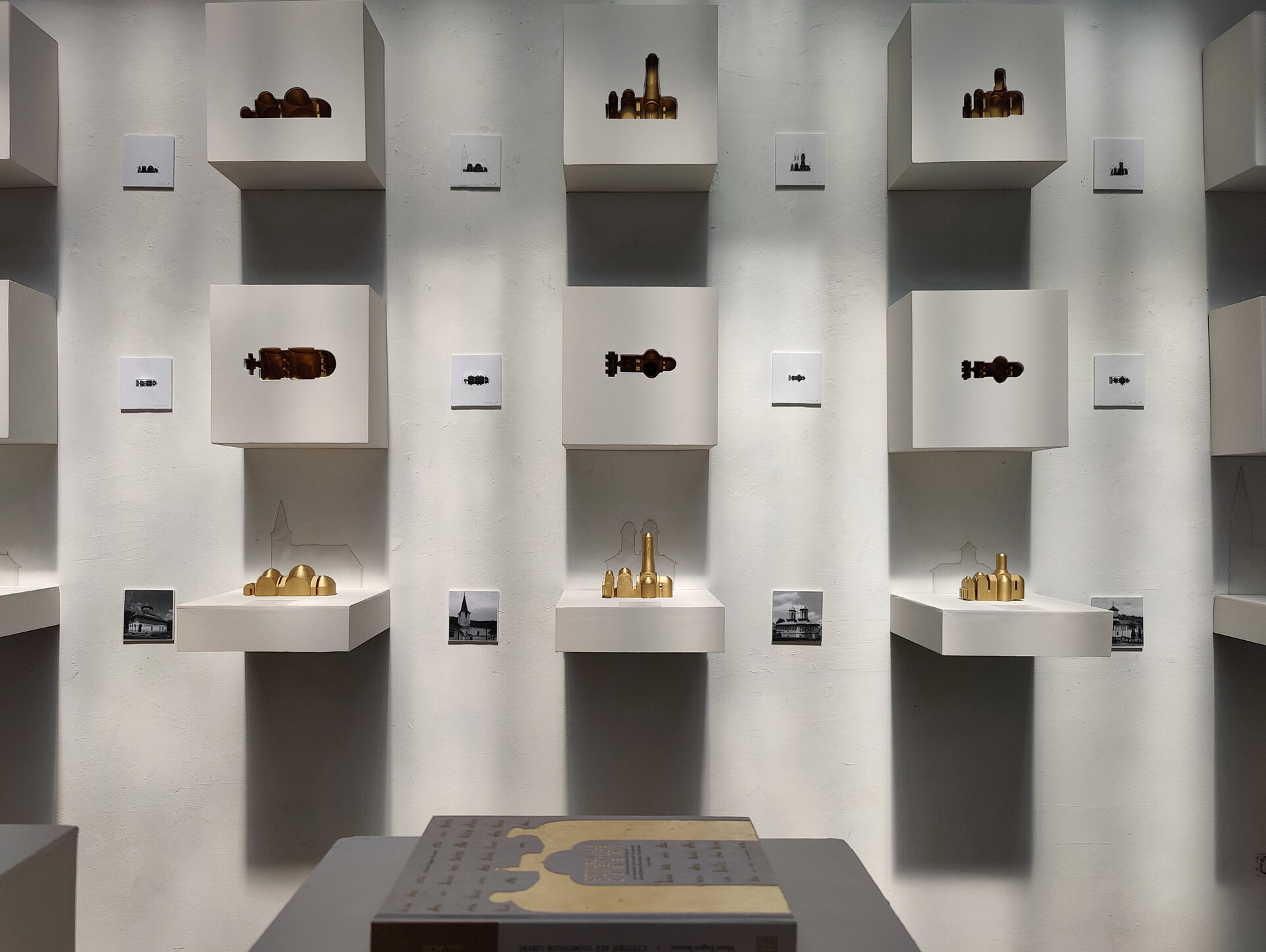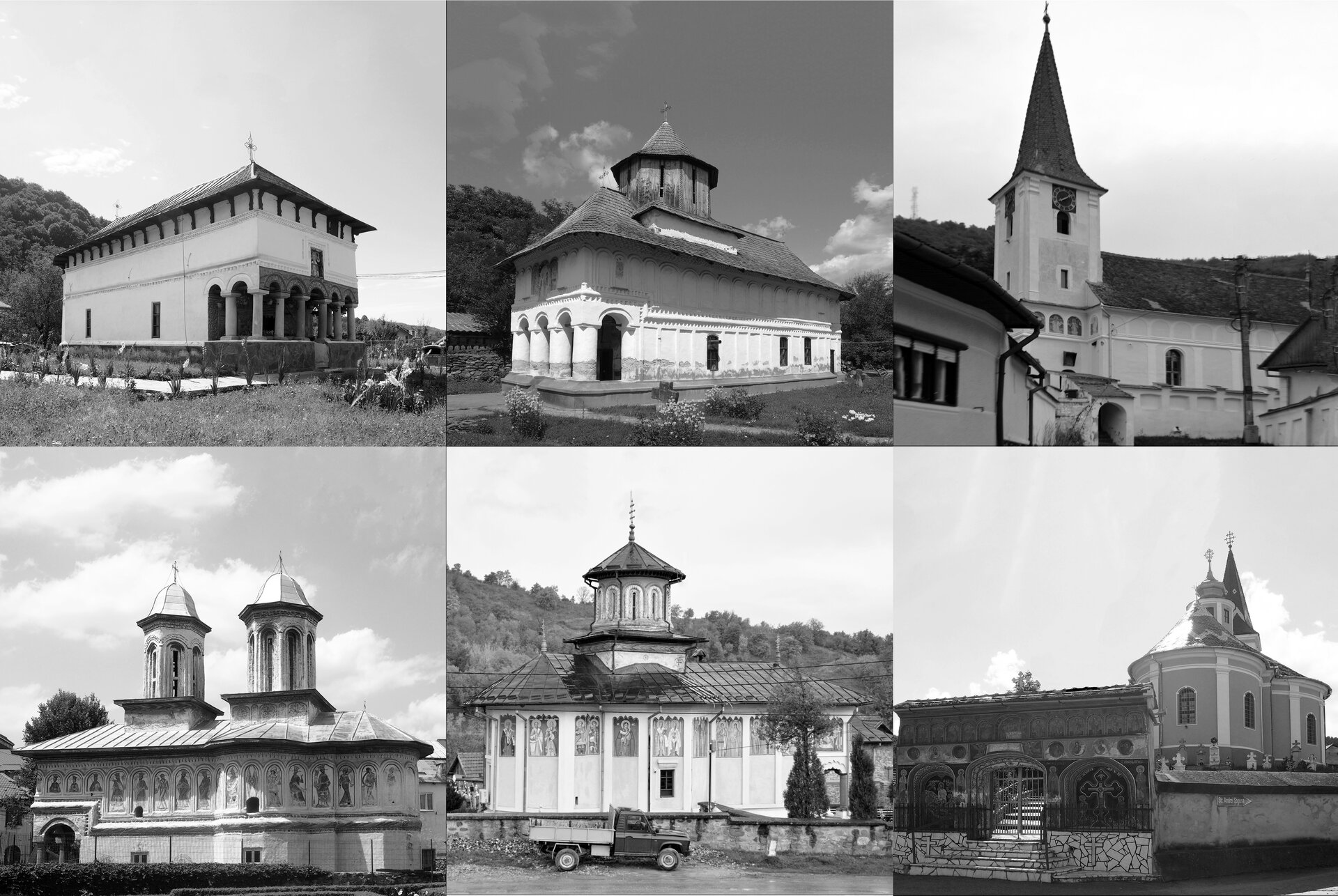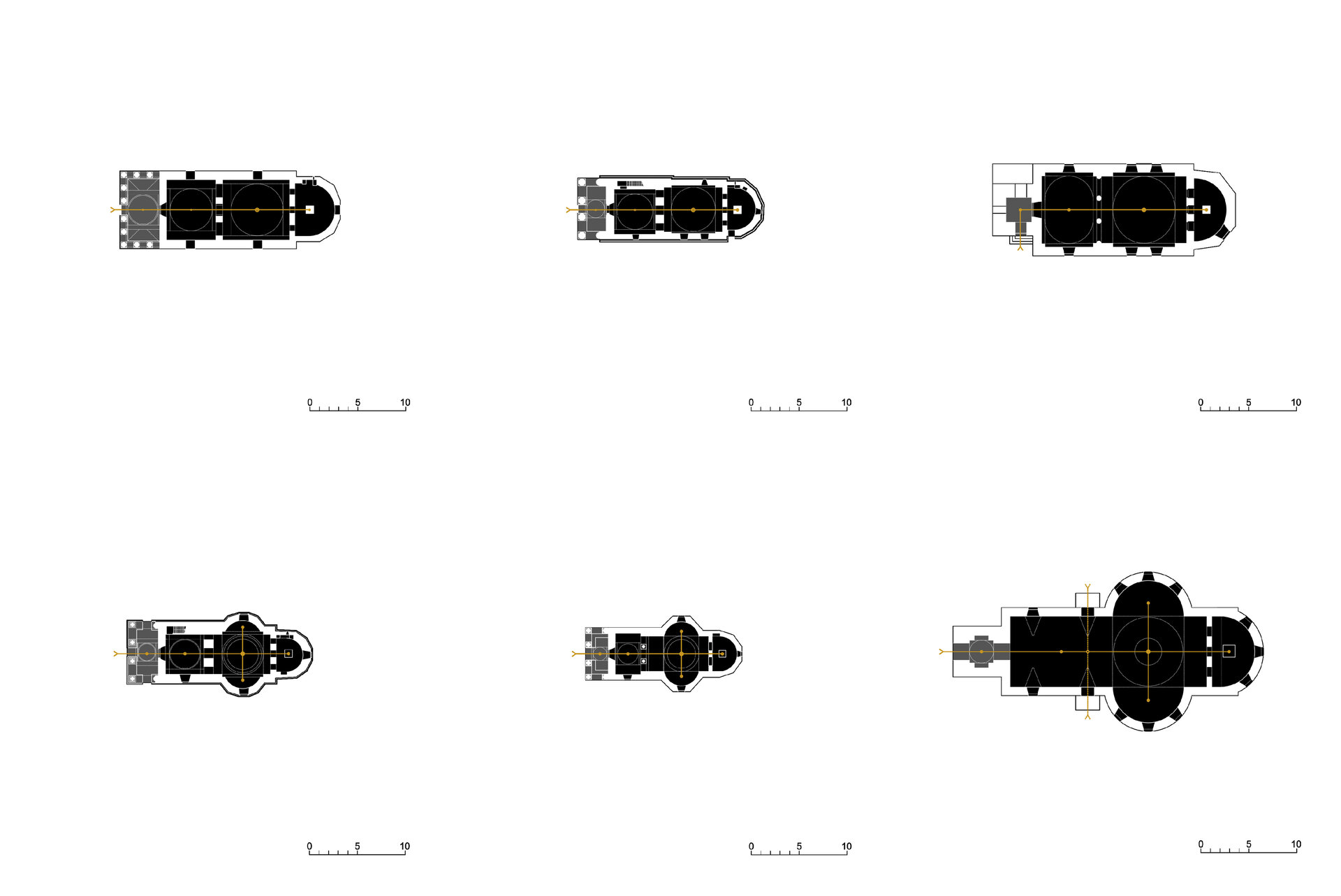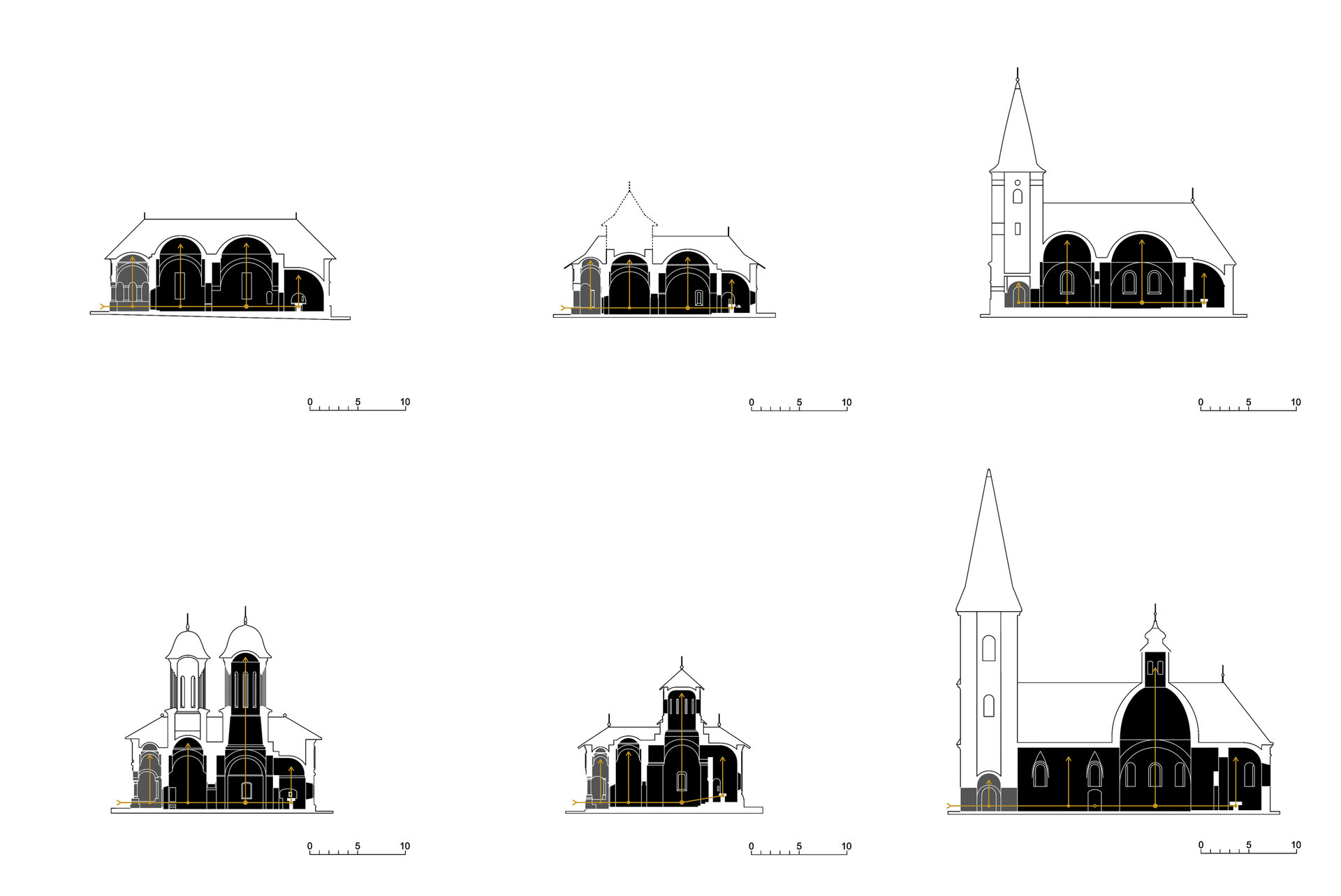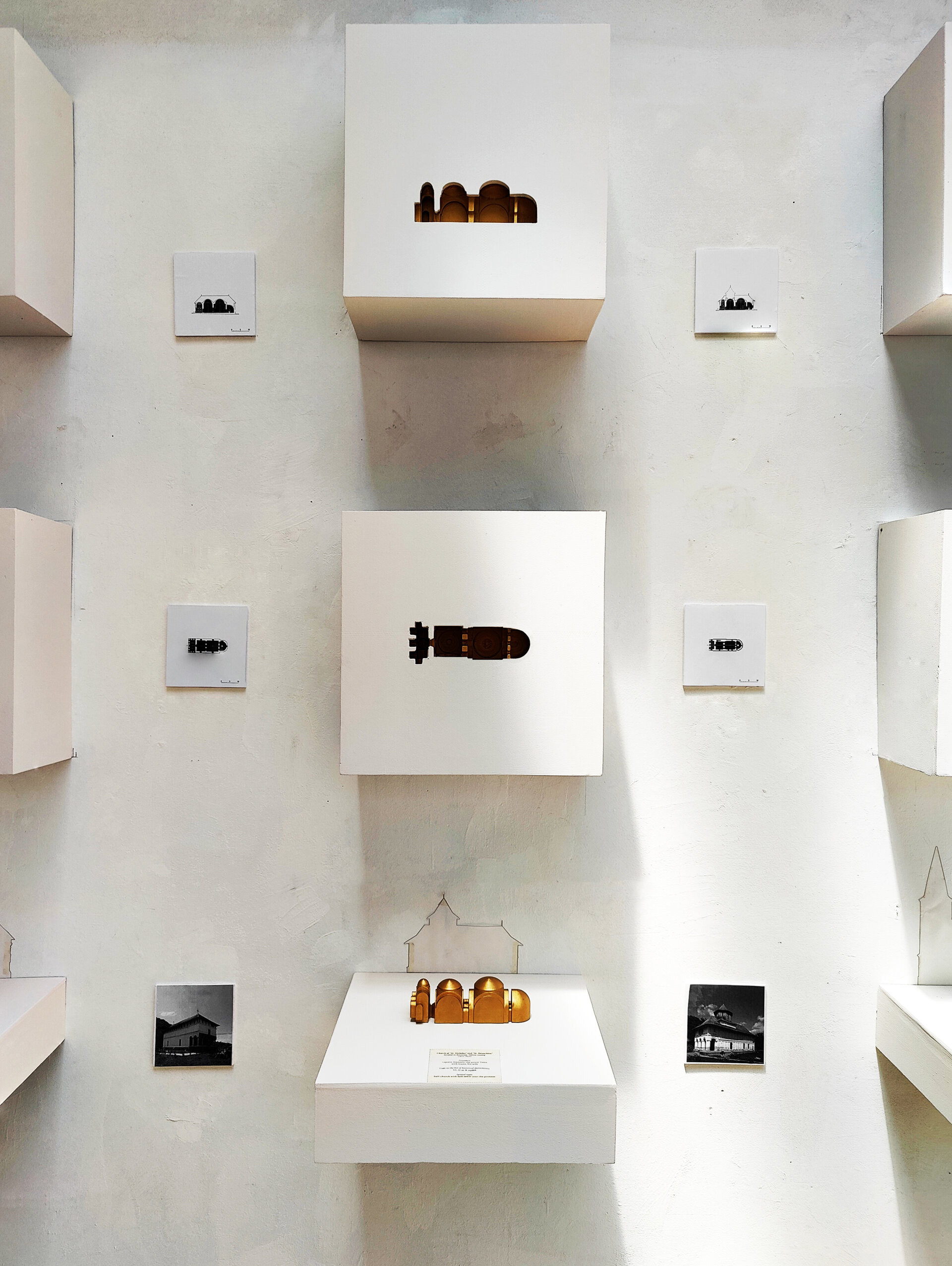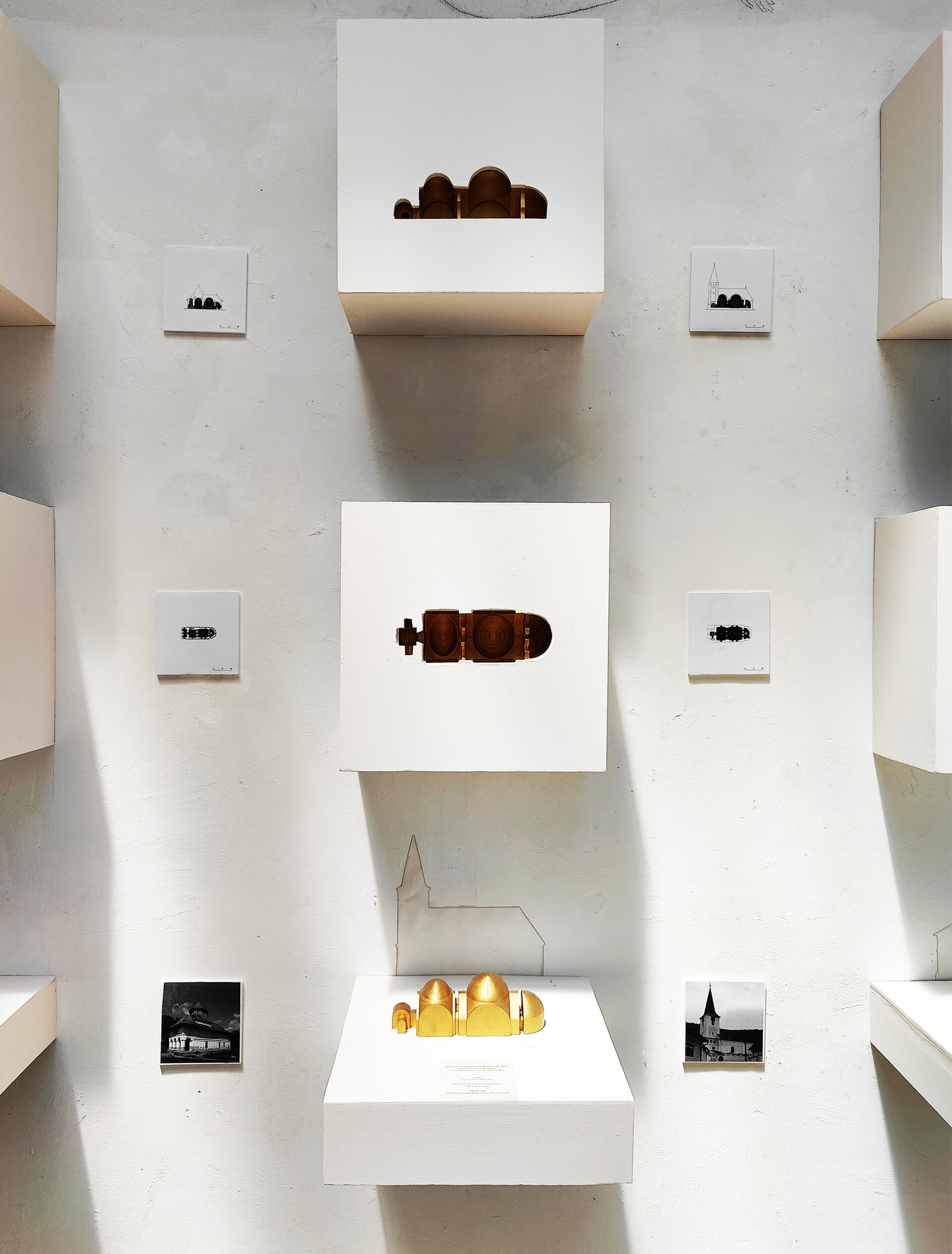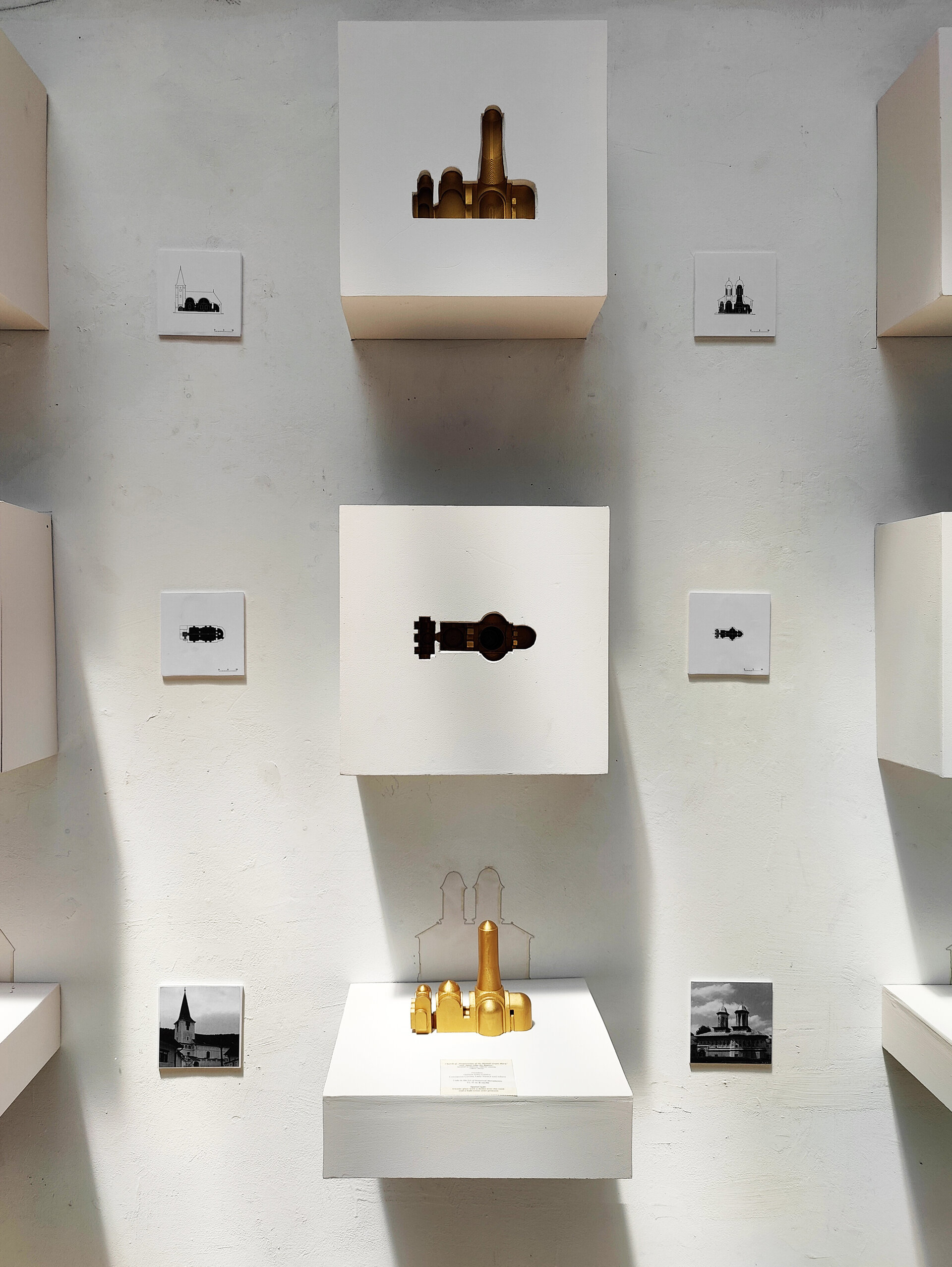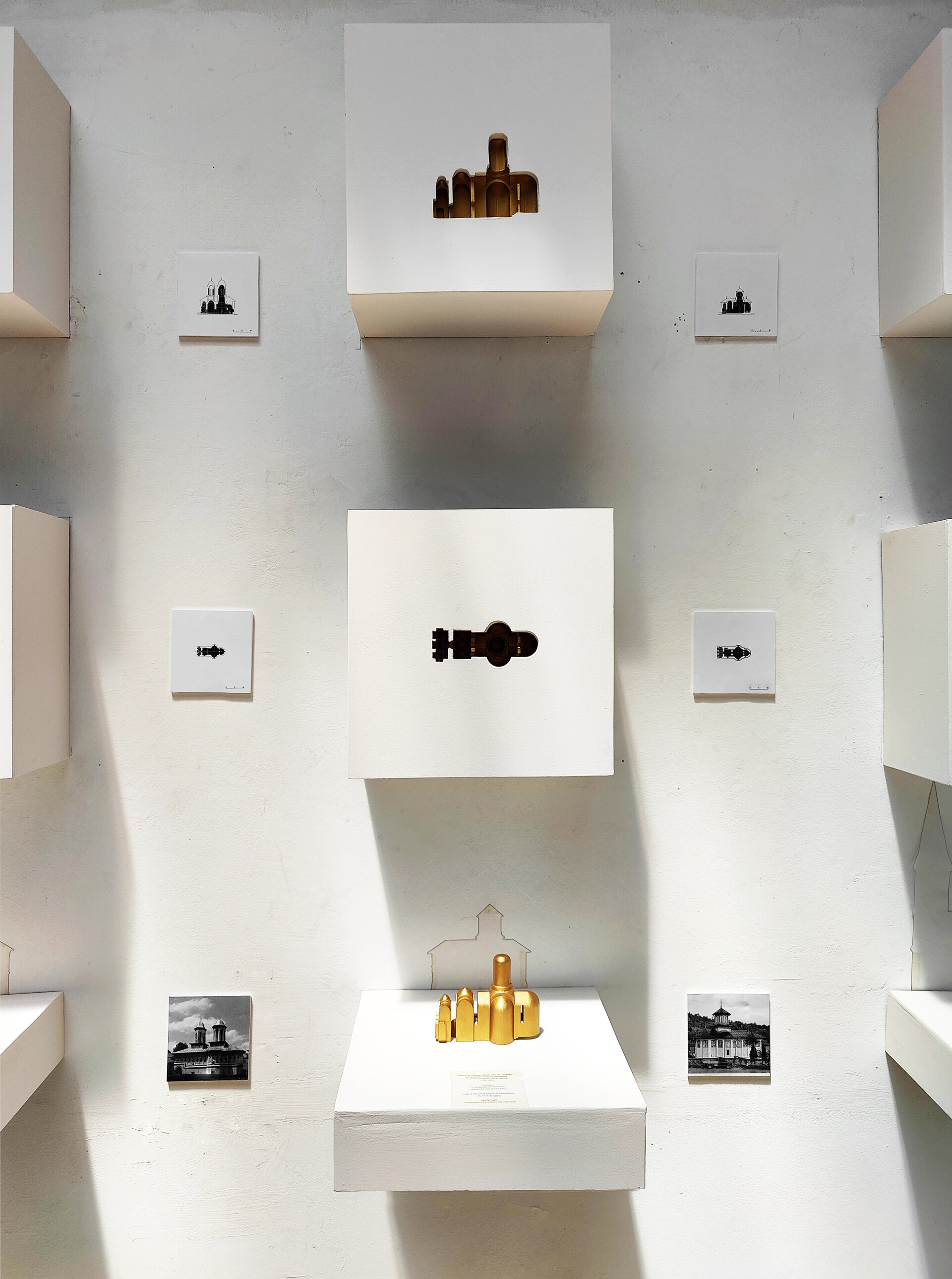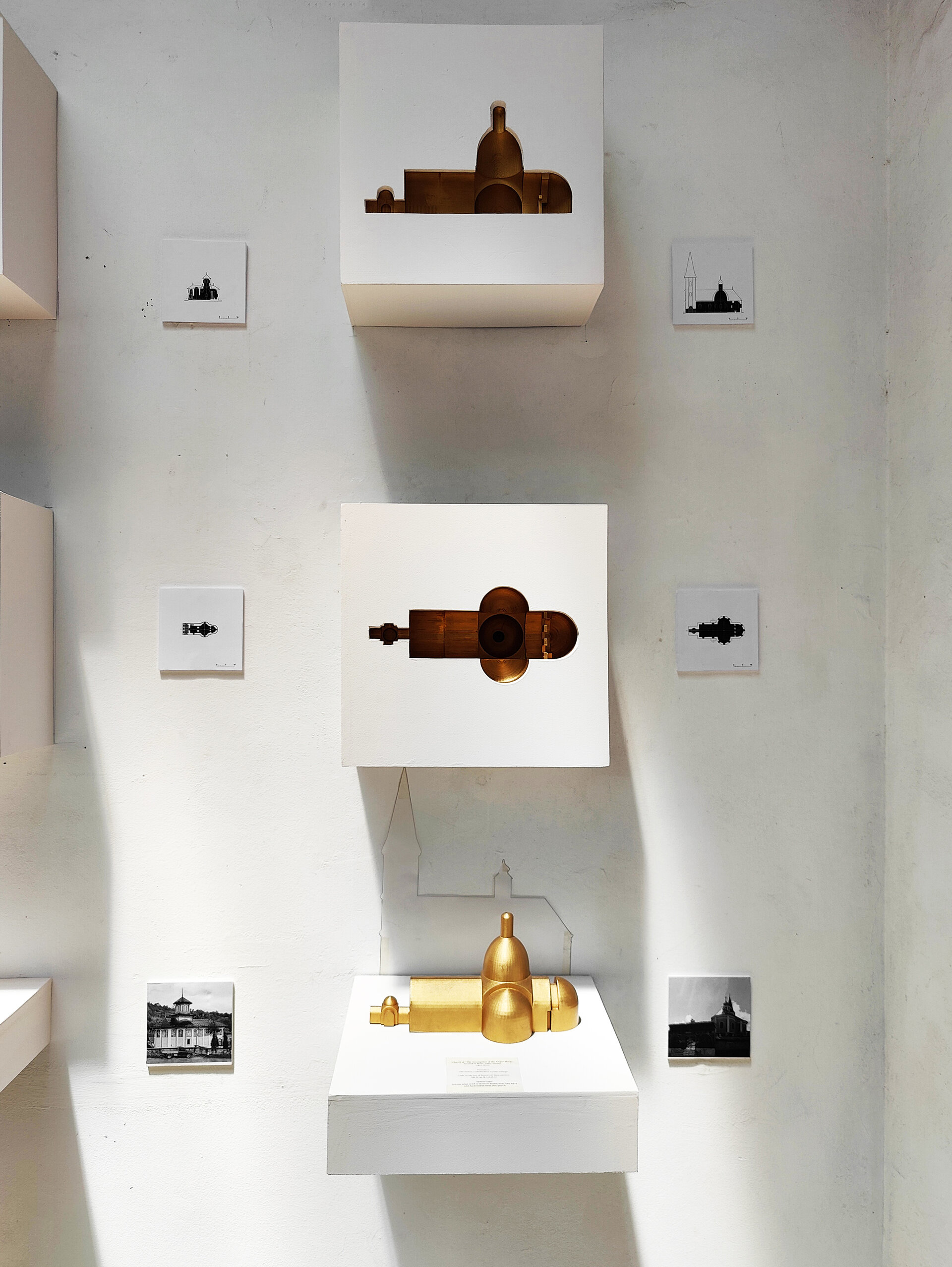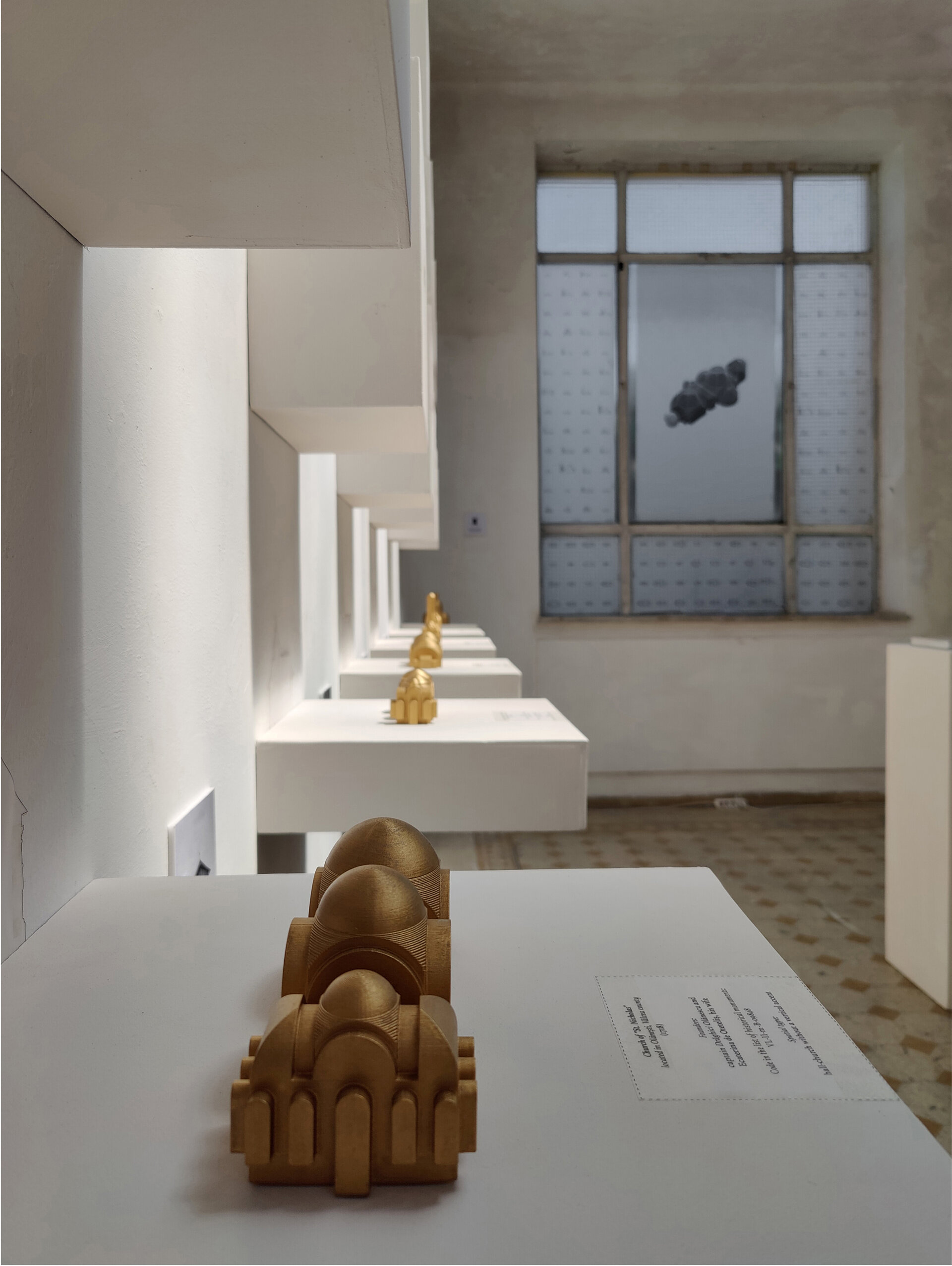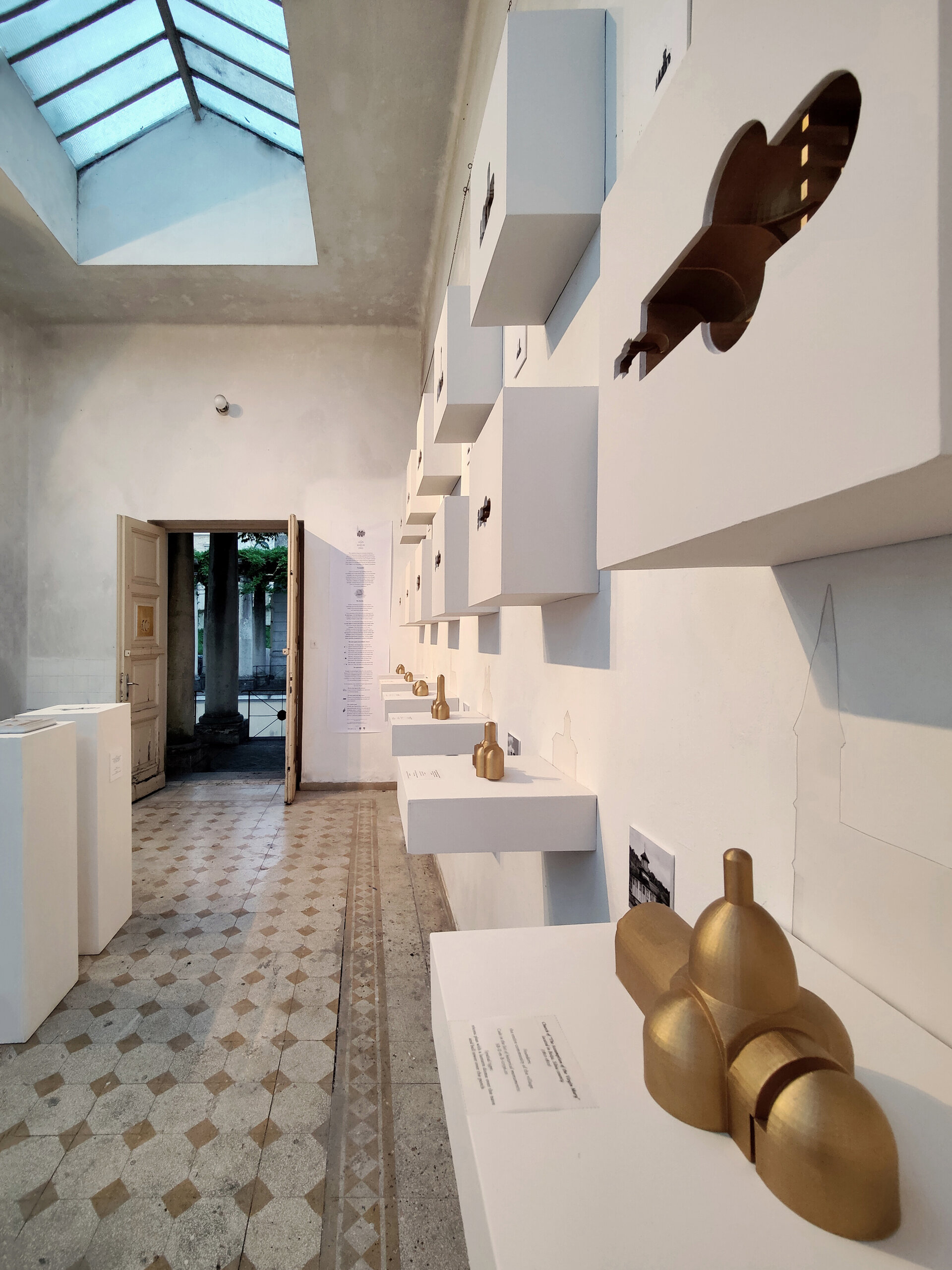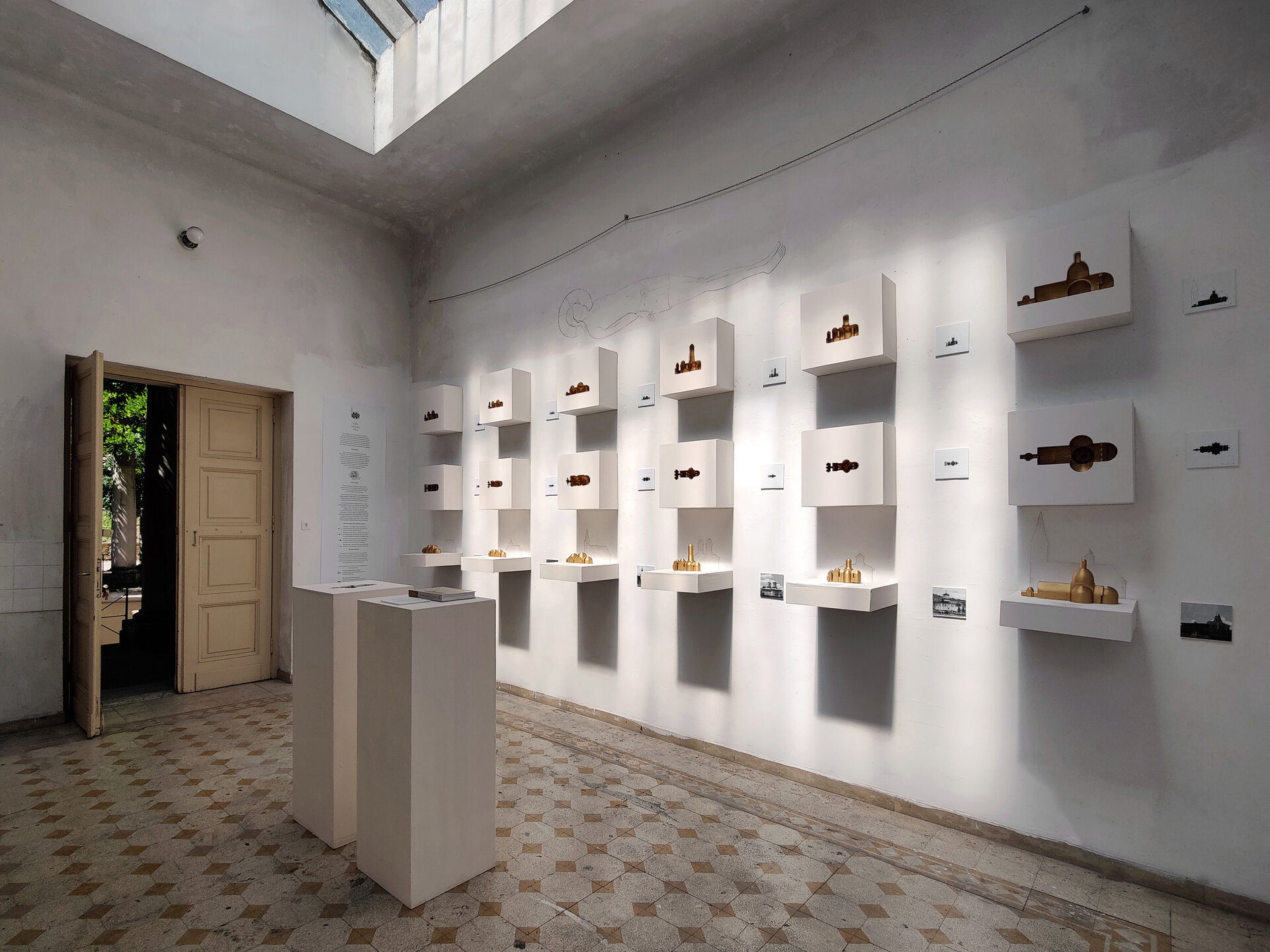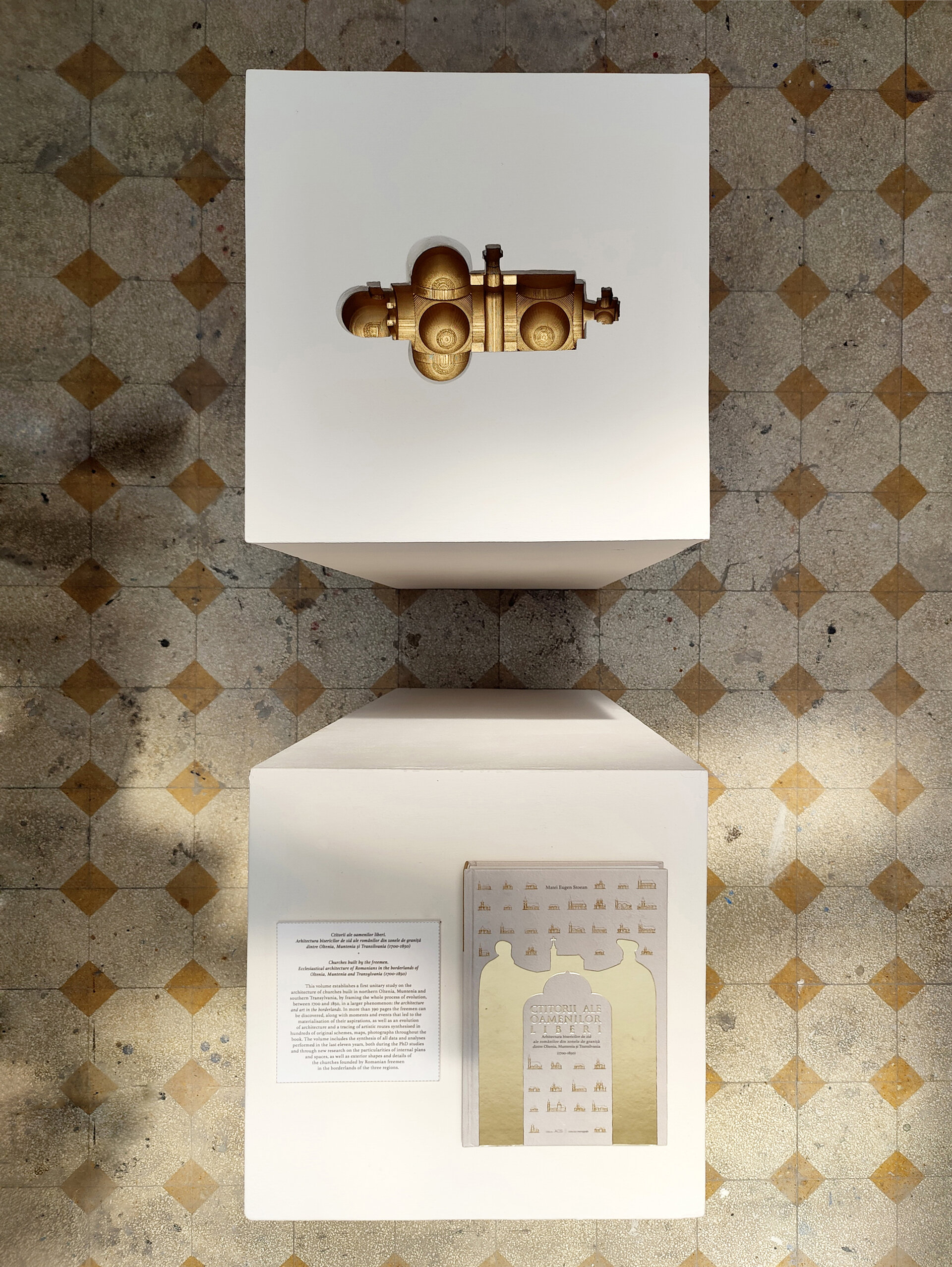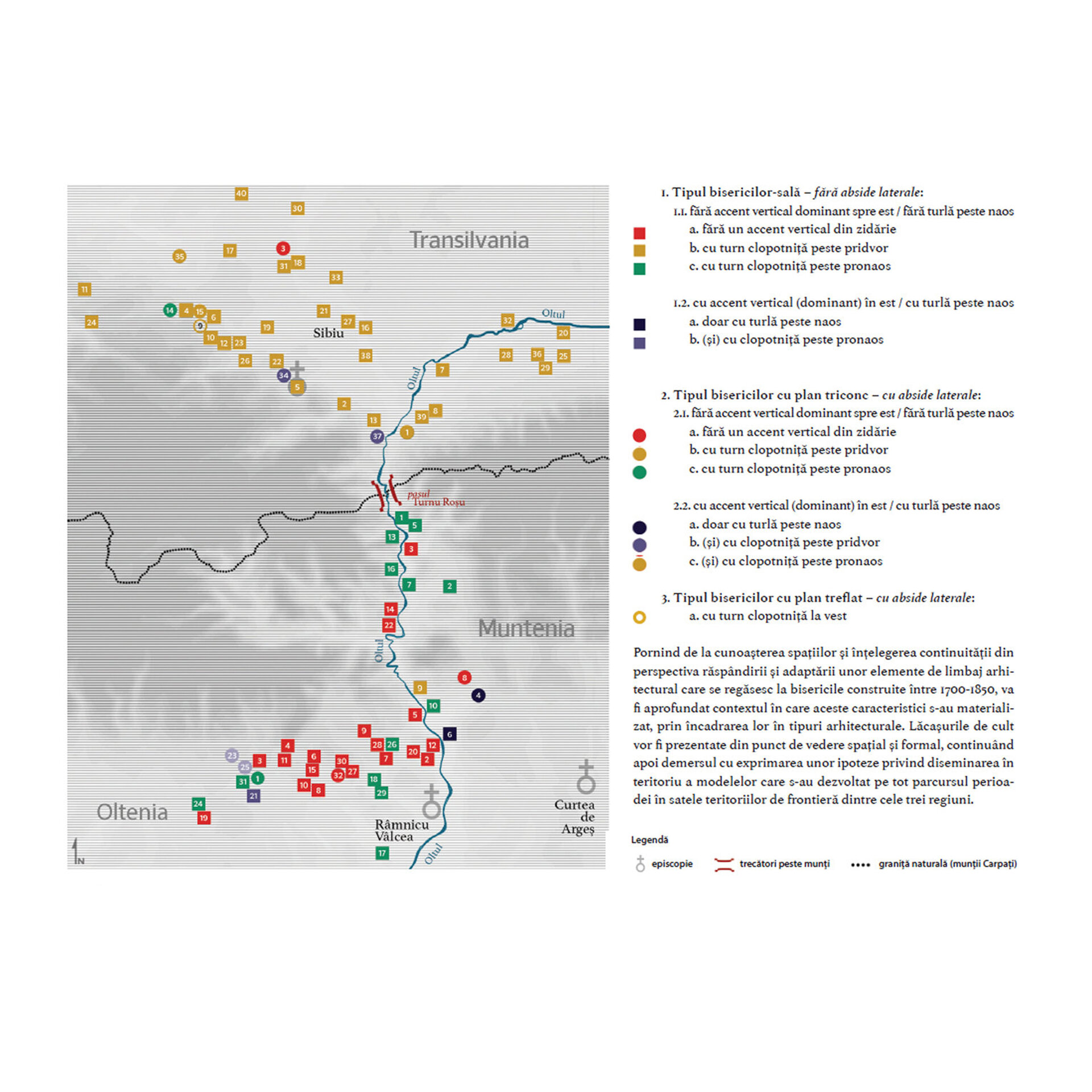
The shape and measure of space
Authors’ Comment
This study, part of a research residence applied in a workshop and exhibited in an open-studio event, focuses on ecclesiastical architecture of rural communities. It aims to assemble the theoretical information and several hundred drawings and surveys from the research carried out in the last 11 years, through a synthesis and materialization of the original discoveries regarding the inner space of the churches built between 1700-1850 in the villages on the borderlands of the Southern Carpathians.
Built mostly by freemen, it implied references to archetypes also to popular local models. Out of the two typologies most commonly used in the 18th century, the hall-churches are the most common. Also, from the 16th century onwards, the triconc plan became common in Wallachia. Seven monuments from the three regions were selected, all subcategories of the spatial types of the hall church and triconc plan, considered representative for the development of the shape of the inner spatiality within the exterior outline.
The selected churches were studied through various drawings and a series of scale models of the inner space, depicted both as solid with a represented presence, and also as the carved void and its defining contour. Thus, even though they were built kilometers and decades apart by various craftsmen for the communities separated by natural and statal borders, with this methodology it could be perceived and analyzed how the inner liturgical spaces of these monuments were created, their shapes and proportions, conducting to a possible objective drawing of connections between all of their spatialities.
Because of the physical materialization of the inner space depicted without its shell (but just a thin line on the wall showing the outer silhouette of the church), transforming the reality as we perceive it, led to a better understanding of the dichotomy between the interior and the exterior in terms of form and image. Thus, if the interior is, in all cases, strongly determined both by the liturgical dogma of the Eastern rite church and the size of the community, the exterior silhouette is influenced either by the local architecture of the major churches built by rulers and boyars (Oltenia and Muntenia) or by the local ecclesiastical architecture (Transylvania) - leading to similar interior spatialities, incorporated in a variety of exterior forms.
The 2D and 3D representations used in this project, original and adapted to the subject of study, found inspiration and scientific base in the methodologies initiated by a few prominent figures of the Italian school of the 20th century, when architecture as space found, in addition to a strong theoretical corpus, a concrete visual form, a translation into images and models intended to become tools for understanding the history of architecture.
Part of the built models of the interior spaces (19 out of the first 21) were exhibited in the Studio 1 of Accademia di Romania in Rome, alongside drawings and photos of the monuments. All of these were included in the international event “Spazi Aperti - Collective exhibition of artists in residence at foreign institutes and academies in Rome” organized by Accademia di Romania in Roma and the Romanian Cultural Institute (June 2023). The open-studio exhibition was also a useful moment of this research by bringing together various visitors engaging in extensive debates about the showcased materials as well as discussions on the methods of depicting and understanding the interior space.
- The Map of Neighbourhood Libraries from Bucharest (HBC)
- Bucharest. Minor Structure vol.1 & 2
- IMUAU Summer School. Schönberg 2023
- MEeT Heritage
- Girafa Urbană ( Urban Giraffe) - Tunari-Eminescu
- Hypostyle
- Voice Your Place
- Cities that transform - Beirut after the blast
- Lapis Domum. In the footsteps of the architecture carved in stone
- The shape and measure of space
- Summer Bucium University, X-th edition, 2022
- Summer Bucium University 2023
- Inventory of the vernacular heritage of Mușetești, Gorj county
